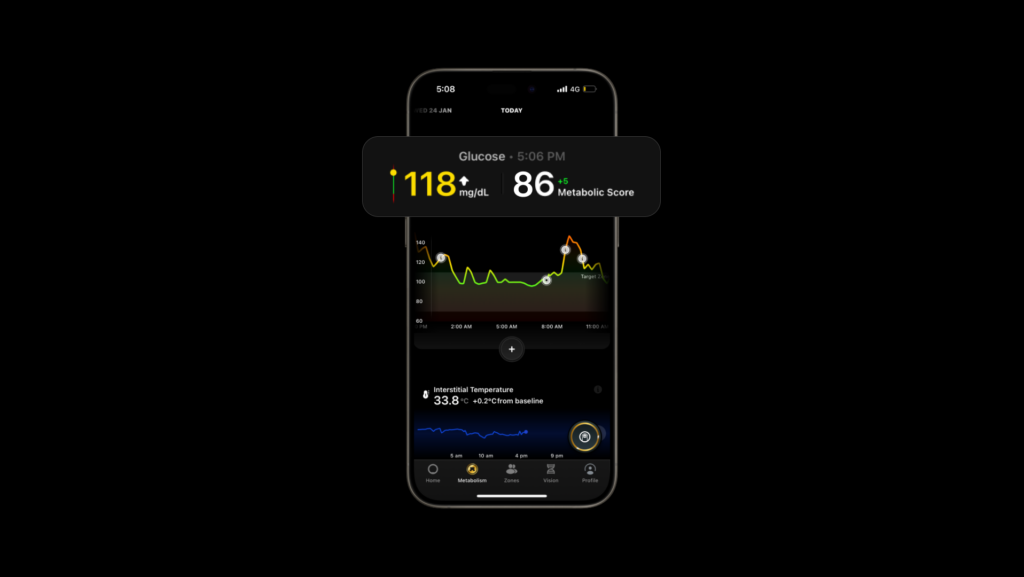Living with unexplained, excruciating pain is physically and emotionally draining. Yet, one in 20 people globally, and four million people in the United States alone, face just such a battle every day, in the form of a disease known as fibromyalgia. Despite the prevalence of fibromyalgia, researchers are still in the dark about what causes it.
Fortunately, there is hope on the horizon as studies continue to discover new information about the disease. Let’s take a closer look at one such study that found a connection between insulin resistance and fibromyalgia pain. Managing blood sugar levels may play a role in treating the disease.

Highlights
- With fibromyalgia, the body sends exaggerated pain signals to the brain, sometimes so severe that the person can no longer function in their normal day-to-day life,
- Research has identified a connection between fibromyalgia and insulin resistance that holds tremendous potential for the management and treatment of the condition,
- While there is no definitive scientific evidence that sugar causes or makes fibromyalgia pain worse, most people who have been suffering from its symptoms find relief after eliminating refined sugars from their diet.
A primer on fibromyalgia
Fibromyalgia is a disorder characterised by chronic pain in various muscles and soft tissues, together with fatigue and cognitive issues. The pain ranges from a mild ache to crippling discomfort. Although research is not conclusive, it appears to result from an abnormal nervous system response. The body sends exaggerated pain signals to the brain, sometimes so severe that the person can no longer function in their normal day-to-day life. The disease causes “regions of pain”, some of which were previously referred to as “tender points.”
These misinterpreted pain signals by the brain and nerves may either be caused by a chemical imbalance in the brain or could also stem from a dysfunction of the dorsal root ganglion—a cluster of neurons in a spinal nerve—which affects how sensitively the brain perceives pain.
Fibromyalgia symptoms are often confused with arthritis. However, the pain is more widespread and also affects soft tissue, not only the joints.
In addition to pain, symptoms of fibromyalgia include:
- Trouble sleeping and fatigue
- Headaches
- Difficulty concentrating
- Memory lapses
- Depression
- Anxiety
- Dry eyes
- Irritable bowel syndrome (IBS)
- Yeast infections
- Bladder problems
While the cause of fibromyalgia remains unknown, risk factors may include autoimmune disorders (such as lupus), genetic influences, traumatic injury, infection or psychological stress. It is more common in women than men, with no known cure. Fortunately, there are medications that can relieve symptoms, while regular exercise, reducing stress and relaxation techniques also help.
The link between fibromyalgia and blood sugar
In 2019, a group of researchers at the University of Texas Medical Branch in Galveston identified a connection between fibromyalgia and insulin resistance (IR). When cells in your muscles, fat and liver don’t respond efficiently to insulin and can’t easily absorb glucose from your blood, it leads to insulin resistance.
The study primarily relied on A1c blood tests to measure the participants’ blood sugar levels. A leading neurologist on the team, Dr Miguel Pappolla, says, “We showed that most—if not all—patients with fibromyalgia can be identified by their A1c levels, which reflects average blood sugar levels over the past two to three months.”
The interesting connection is that people with prediabetes who have elevated A1c values were found to be at a higher risk of developing central brain pain. This is the hallmark of fibromyalgia.
During the study, researchers were able to treat fibromyalgia-related pain with metformin. This drug is commonly prescribed to treat insulin resistance and regulate blood sugar levels. Lowering blood sugar led to improvement in fibromyalgia symptoms for some, but half of the participants of the study reported complete alleviation of pain, which made the study unprecedented.
Dr. Pappolla adds, “Earlier studies discovered that insulin resistance causes dysfunction within the brain’s small blood vessels. Since this issue is also present in fibromyalgia, we investigated whether insulin resistance is the missing link in this disorder.” The energy depletion caused by insulin dysfunction also helps explain the tremendous fatigue experienced by many people with fibromyalgia.
This study holds immense potential for the management and treatment of fibromyalgia since this connection was surprisingly not investigated enough in the scientific community, increasing the stigma around fibromyalgia.

Fibromyalgia and sugar cravings
Though no specific diet is prescribed for the treatment of fibromyalgia, research suggests that foods that lower blood sugar can help to manage the condition. The irony is that people with fibromyalgia may experience sugar cravings due to low energy levels. Dr Kristi Mizelle, director of the Rheumatology Holistic Care Clinic at Johns Hopkins Hospital in Baltimore, says people with fibromyalgia may get trapped into a sugar spiral—you experience pain, which prevents you from being active, and you’re physically and mentally exhausted. This causes you to reach for carbohydrates and sugar for a quick energy boost.
A sugar habit can be detrimental for people suffering from chronic pain and fibromyalgia. Jacob Teitelbaum, MD, medical director of Fibromyalgia and Fatigue Centers, Inc., says that eating too much sugar aggravates blood sugar levels, adrenal problems, yeast overgrowth (candida), and vitamin and mineral deficiencies that worsen the disease. Fibromyalgia symptoms are often worse when the sugar high crashes.
Teitelbaum identifies a few profiles of sugar addictions, all of them connected to the development of fibromyalgia. According to him, chronic stressors can exhaust one’s adrenal glands, leading to irritability and cravings. Yeast or candida overgrowth has also been correlated with sugar cravings in people with fibromyalgia who tend to experience irritable bowel syndrome. Probiotics can help to address this condition. Menopause, andropause (male menopause), menstrual period and depression have also been linked to sugar yearnings.
The first step is to cut out sugar as much as possible. Most people have more energy and feel mentally sharper after just 10 days, and in about six to 12 weeks, there is often significant relief from fibromyalgia symptoms.
While there is no scientific evidence that sugar causes or makes fibromyalgia pain worse, most people who have been suffering from its symptoms find relief after eliminating refined sugars from their diet.
Conclusion
Fibromyalgia is notoriously misdiagnosed and misunderstood. People who suffer symptoms often feel overwhelmed by extreme pain and fatigue, in addition to the emotional toll of the disease. Treatment remains difficult, and the connection between fibromyalgia and blood sugar continues to be researched. This research offers hope, especially to those who have been struggling for a long time. If you have fibromyalgia, monitoring blood glucose levels and making lifestyle changes that keep your blood sugar levels in the normal range can improve your symptoms.
Disclaimer: The contents of this article are for general information and educational purposes only. It neither provides any medical advice nor intends to substitute professional medical opinion on the treatment, diagnosis, prevention or alleviation of any disease, disorder or disability. Always consult with your doctor or qualified healthcare professional about your health condition and/or concerns and before undertaking a new health care regimen including making any dietary or lifestyle changes.
References
- https://www.news-medical.net/health/Fibromyalgia-Epidemiology.aspx
- https://www.healthline.com/health/fibromyalgia#symptoms
- https://www.medicalnewstoday.com/articles/147083#diagnosis
- https://www.mayoclinic.org/diseases-conditions/fibromyalgia/symptoms-causes/syc-20354780
- https://www.medicalnewstoday.com/articles/325155








